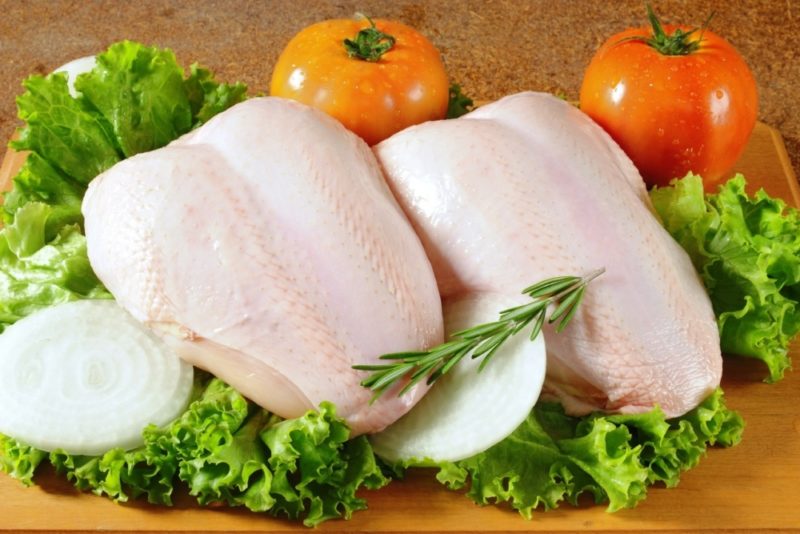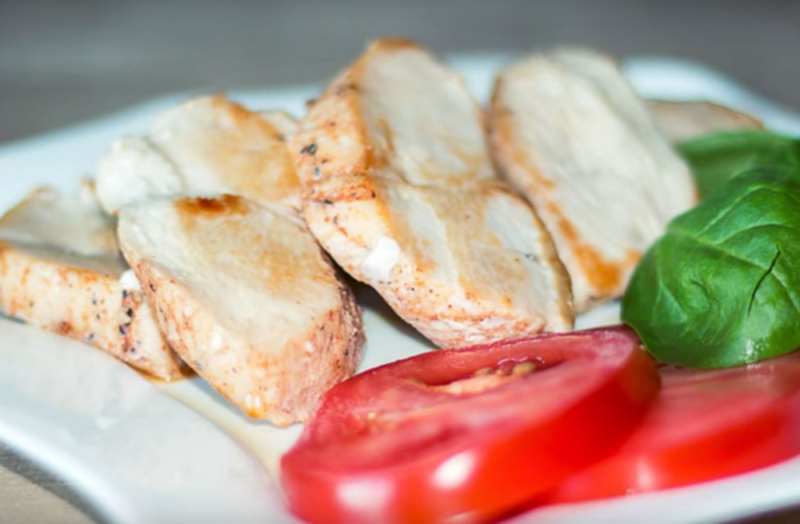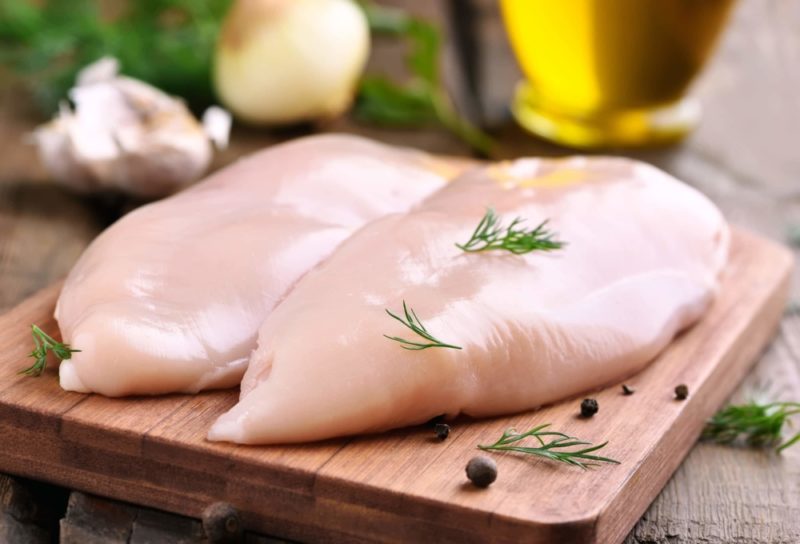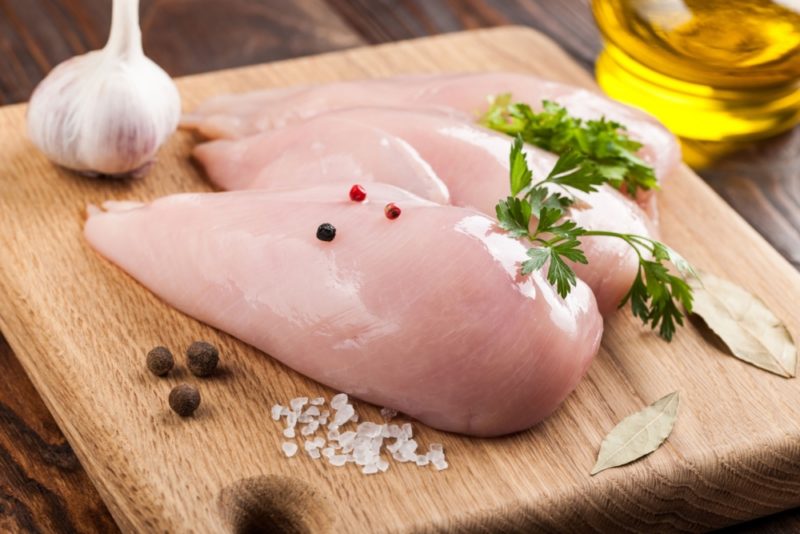In order to lose weight and not gain weight again, you need to eat a balanced diet, not to get more energy with food than the body spends. The low fat white chicken meat is an aid in achieving these goals. The main guideline for losing weight is the information about how many calories are in the chicken breast, and with which cooking the nutrients are stored as much as possible.
Material Content:
Composition and nutritional value of chicken breast
In total, poultry meat accounts for 17-21% of proteins, connective tissue - up to 8%, fats - from 5 to 18%. Chicken pectoral muscles are characterized by the highest protein content and a small amount of lipids. The nutritional value of chicken breast is very high. Connective tissues are 2 times less than in the leg muscles.
Chicken breast, fillet, not cooked, consist of the following compounds (in a portion of 100 g):
- high-quality protein - from 21 to 30 g;
- fat - from 0.7 to 4 g;
- carbohydrates - from 0.27 to 0.4 g;
- dietary fiber - 0.5 g.
For comparison: in the hips - protein 18.15 g, fat 11.2 g.
The content of basic nutrients and the calorie content of the finished dish depend on the method of heat treatment. During cooking, about 10% of protein, over 30% of fat passes into the broth. In a fried breast, the loss of nutrients is slightly greater - up to 15% protein and up to 48% fat. Also, heat treatment leads to the destruction of vitamins.
Short cooking time of chicken breast (20-30 minutes) is an advantage of dietary meat. The shorter the heat treatment, the less useful nutrients and bioactive substances are lost.
Another way to better preserve the proteins, vitamins and mineral components of chicken breast is to cook minced meat for cutlets.Loss of protein in this case is reduced by 2 times (compared with frying and cooking). Add vegetables or soaked cereals to the minced meat.
On a note! Of all the cooking methods, frying poultry is considered the least profitable.
There is juice in the pan that is not used. When cooking meat, the broth goes to the preparation of the first dish. Less loss of nutrients when stewing and preparing chopped cutlets from the breast.
Baked breast is juicier than fried. The use of foil or other casing for baking prevents the dissolution and leaching of juices from products during cooking.
Calorie content with different cooking methods
Poultry skin contains fat and connective tissue. These components have a significant impact on the nutritional and energy value of a food product. The calorie content of chicken is only 98.3–116 kcal. The energy value of raw breasts with skin is from 126 to 152 kcal (per 100 g of product).
The lowest calorie poultry dishes are skinless boiled and baked in the oven. If you accurately calculate how many calories are in boiled chicken breast, you get a result in the range from 127 to 137 kcal (per 100 g of product).
The use of oil or margarine when frying increases the calorie content of food.
However, the energy value of fried chicken breast without skin is not much more than boiled - from 131 to 165 kcal (per 100 g of product). Energy comes almost exclusively from protein, as fat is only 1–2 g.
The content of vitamins, trace elements
Chicken breast is an excellent supplier of B vitamins to the body. They are important for many body functions, especially for the functioning of the nervous system.
List of vitamins in the composition of chicken breast (per 100 g of product):
- A - 27 mcg.
- B1 - 0.07 mg.
- B2 - 0.09 mg.
- B6 - 0.53 mg.
- E - 0.3 mg.
- PP - 7.7 mg
- Niacin - 11 mg.
Vitamin PP - a participant in redox reactions necessary for energy metabolism. With insufficient intake of food, the gastrointestinal tract and nervous system are disrupted, and the skin condition worsens.
Minerals of Chicken Breast:
- Potassium - 292 mg.
- Phosphorus - 171 mg.
- Magnesium - 86 mg.
- Sodium - 60 mg.
- Calcium - 8 mg.
- Iron - 1.4 mg.
- Zinc - 1.3 mg.
Potassium and magnesium are essential for metabolism and muscle work. The lack of mineral elements leads to a violation of the synthesis of proteins and nucleic acids, energy metabolism, electrolyte balance. The risk of hypertension and other pathologies of the cardiovascular system increases. Iron is used in hematopoiesis, is part of red blood cells.
Useful properties for the body
Chicken is a popular and sought-after food product, which is characterized by a low content of fat and connective tissue. Chicken meat is easily digested, is a source of high quality protein, vitamins and minerals.
The amount of fat in different parts of the bird is different. This feature should be considered adherents of a low-calorie diet.
Skinless breasts are the least fatty part of the chicken. It contains high-quality protein, vitamins, macro- and microelements. It is used for cooking, frying, baking. Chicken breast is an assistant for those who want to lose weight, maintain normal weight without harming their health.
















